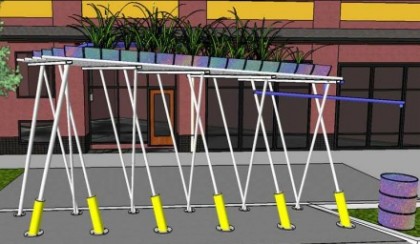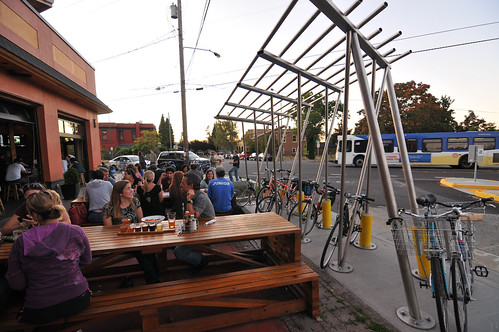
(Photos © J. Maus)
A new bike parking structure in Woodlawn is nearly completed and is already getting a lot of use.
The NE Durham and Dekum Green Street Bike Art Project is a collaboration between the the City’s environmental services and transportation bureaus and the Regional Arts and Culture Council. The goal of the project was to build a spot for plantings in the sidewalk area to help with stormwater management (a.k.a. a “green street facility) that combines a covered bike parking shelter with public art.
Judging from some observations of the street yesterday, the project looks to be a success. The bike racks were nearly full and people gathered on the sidewalk nearby to enjoy friends, food and drinks at Breakside Brewery.

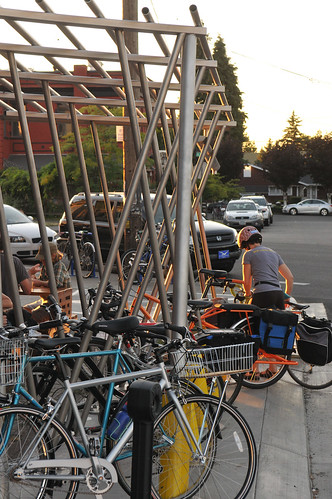
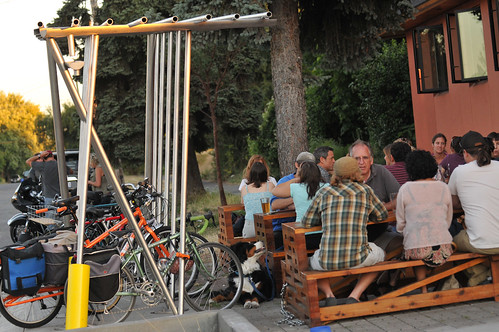
When I first reported about this project back in October, there was a mild outcry at the design. Artists Buster Simpson and Peg Butler had originally planned to include a rusted out car as the centerpiece of the bike shelter. The artists said the sculptural portion of the shelter — to be created from “sliced and pieced together oil drums, portions of a car frame, and living plants” — would make a statement about, “a future less dependent on the automobile and petroleum based economy.”
Many thought the vision of an old car giving way to gleaming bike racks would make a powerful statement; but others didn’t like the design at all. One commenter put it this way:
“This comes off as an US vs. THEM statement and has already generated negative feelings from viewing the concept renderings, and that is from people inside the bicycling community.”
After hearing from the community in a public meeting back in January, the artist and the Bureau of Environmental Services decided to scrap the car and oil drums altogether. The oil drums will remain.
Here’s the initial design with the car…

And here’s the modified design (note the oil drums that will act as pots for plants)..

The shelter is easy to access via a ramped curb from Durham Street. The poles (u-locks easily fit around them) are solid and anchored to the ground with cement columns. The shelter has capacity for about 11 bikes at the minimum (more if you don’t mind doubling up with a friend). Below are a few more shots…
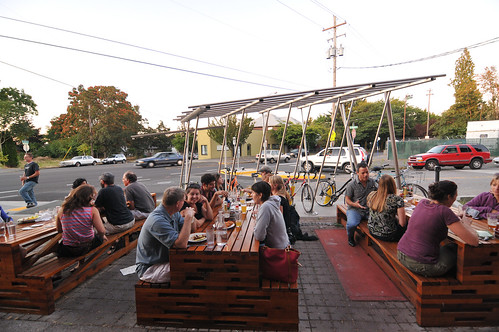
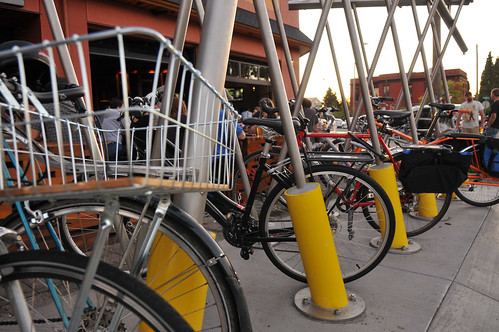
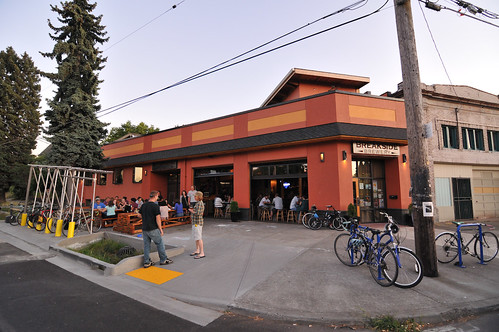
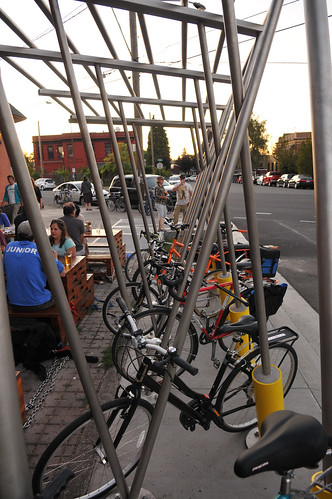
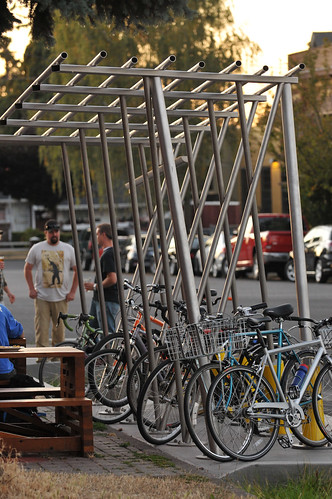
I’m anxious to see how the roof comes together. What do you think?
UPDATE, 3:30pm:
Below are some notes about the design sent to me by the Regional Arts and Culture Council Public Art Manager Kristin Calhoun:
“The art installation works with materials and imagery related to petroleum use and production. The exterior of the oil barrels is painted with an iridescent paint that shifts hues mirroring the rainbow sheen that appears when oil meets water. On the underside of each barrel, the name of an oil field is stenciled, referring to the history and culture of oil use: the field names connect the petroleum product to a place of origin with its own story. The halved oil barrels are filled with soil and plants, a positive transformation that seeds possibility.
Dekumstruction [the name of the installation] receives roof water from an adjacent building via an aluminum pipe. The water then flows through the oil barrel planters to a downspout that delivers it to an upended barrel, ‘beating the drum’ on rainy days. Also, at street level, at the north and south ends of the installation, there are stormwater infiltration areas that collect and infiltrate the street stormwater, which carries with it gas and oil. The infiltration areas slow the water and allow it to percolate into the ground where some of the toxins are taken up by the roots of plants. The overall project expresses shifting attitudes about energy and stormwater management.
The lower bike rack is also designed by Simpson & Butler as a prototype for repeated use around the City. The bike rack and planters take the place of two car parking spots and can provide parking for up to 20 bikes of various types and is capable of supporting 5000 pounds to accommodate the work of different artists at each location.”
